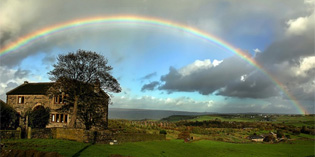25 tác phẩm nhiếp ảnh tuyệt đẹp về các loài chim
Nhiếp ảnh về loài chim là một trong những thể loại phổ biến nhất của nhiếp ảnh thiên nhiên. Điều này sẽ không gây ngạc nhiên vì Birding là một trong những thú tiêu khiển phổ biến nhất trên thế giới. Nhiếp ảnh chim cũng là một thể loại rất khó khăn, đòi hỏi phải có kỹ năng chuyên môn và trang thiết bị – vì không phải đơn giản giống như việc giơ máy ảnh là chụp được một tấm ảnh gia đình . Trên thể loại chụp ảnh chim, người nhiếp ảnh cần phải có những thiết bị tốt nhất, tay nghề cao cũng như sự hiểu biết thấu đáo về các loài chim. Nhưng quan trọng nhất tất cả họ đều có 1 tình yêu sâu sắc với thể loại này và quan trọng là họ đã cho chúng ta những tấm ảnh đẹp để thưởng thức , mời các bạn cùng theo dõi
Phía cuối bài là những kỹ thuật giúp bạn biết cách chụp tốt về loài chim. Mình hiện bận quá chưa kịp dịch, bạn nào có khả năng thì dịch giúp mình đoạn Tip ở cuối bài nhé























1. Location: Take a trip to your wildlife centre. Try to find a great locations with a variety of species and big hides ideal for any keen bird photographer.
2. Lens choice: If you get too close you’ll scare the birds so you want to use a telephoto lens to fill the frame with your feathered subjects. You don’t need the most expensive lenses to get top shots. Canon has a range of affordable and lighter (so easier to shoot handheld without needing a monopod or tripod) L-series lenses suited to smaller EOS camera bodies.
3. Come in close: Focus on individual flocks in a scene for a neater shot, otherwise the eye will be left to wander awkwardly around the frame with no clear focal point to fix on to.
4. Timing: Timing and patience is key to photographing birds. Position yourself so the background behind your chosen bird contrasts or complements the subject, and then wait until other birds or distractions have moved away before grabbing the shot.
5. Shutter speed: Use the semi-auto Tv (Time value – aka Shutter Priority) mode. Set your shutter speed while your camera automatically sets an aperture for a standard exposure. Birds are fast-moving, twitchy creatures. You’ll need to use a fast shutter speed to freeze their movement and obtain sharp shots – too slow and you’ll end up with blurred images. Aim for shutter speeds between 1/500-1/1000 sec. You should also be aware that when shooting in Tv mode, if your shutter speed is slow, your aperture will become narrower. It will increase depth of field and keep more of your backdrops in focus – which means your birds won’t stand out in the scene as well as when using a wider aperture such as f/5.6.
6. Habits: Study different birds and watch their behaviour to catch an original shot that reveals the true character of your feathered subjects. See if they’re doing anything interesting – preening in the water, balancing on one leg, twisting their head into a unique pose, or perhaps singing – which will help to make a better shot.
7. Crop factor: Canon EOS D-SLRs come in three different flavoured sensors – APS-C/1.6x crop factor (eg 450D, 60D and 7D), APS-H/1.3x crop factor (eg 1D Mk IV) and full-frame/no crop factor (eg 5D Mk II and 1Ds Mk III). These crop factors affect sensor size and also effective focal length (EFL). For example, a 18-200mm lens on a 450D has an EFL of 29-320mm. So you lose out on the wide-angle end, but you gain on the telephoto end – which is a bonus for shooting wildlife when you need to get close!
8. Focus: Your Canon has three main autofocus (AF) modes: One Shot AF for shooting subjects that aren’t moving, AI Servo AF for tracking and shooting moving targets and AI Focus AF, which aims to automatically switch been One Shot and AI Servo if your subjects can’t make up their mind! For photographing birds in flight switch to AI Servo AF to help keep up with the bird. In this mode the AF beep doesn’t sound when you’ve achieved focus, so you need to trust your camera. Use AI Servo with High-speed continuous drive mode and you’ll capture winning shots!
9. Extend: Extenders can affordably increase the reach of Canon EF telephoto prime and zoom lenses. If you use an EF 1.4x Extender on a 500mm lens it transforms it to 700mm. Extenders are only compatible with some lenses, such as the EF 70-200mm f/4L and fixed- length L-series models over 135mm.
10. Hide away: Finally you don’t want to scare the birds so make sure you keep your distance. You can either hold back or sit closer to the birds in a hide. Use slow movements and be patient – the birds will come to you!

















